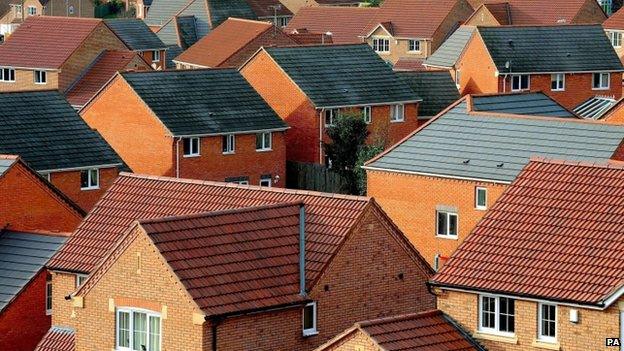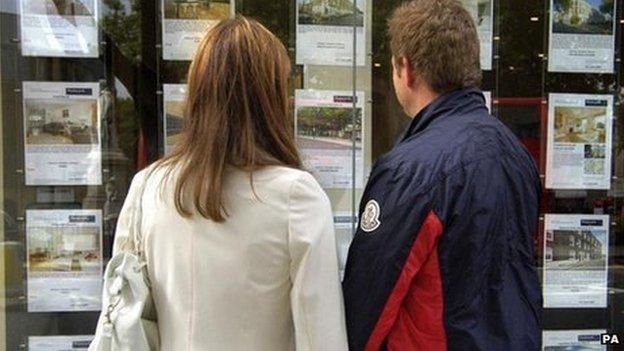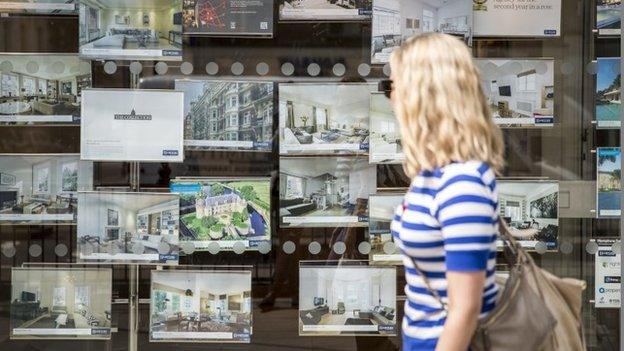Scottish house prices rise to record quarterly figure
- Published

Property prices rose sharply in Scotland between January and March, according to official figures from Registers of Scotland (RoS), external.
The average house price climbed year-on-year by 13.3% to £173,830 - the highest quarterly figure since since RoS began compiling statistics in 2003.
The value of sales rose year-on-year by 8% to £2.95bn.
However, the total volume of sales across Scotland fell by 4.7% to just under 17,000.
All local authority areas in Scotland showed a rise in average prices.
The highest percentage rise was in East Lothian - up 28.6% on the same period a year ago, to an average of £248,902.

West Dunbartonshire showed the largest percentage rise in the number of sales, with an increase of 10.6%.
The biggest percentage decrease was in Midlothian, which dropped 28.1% to 233 residential house sales.
The City of Edinburgh recorded both the highest average for the quarter at £260,647 - a rise of 21.4% - and the highest volume of sales, with 2,123.
It also accounted for Scotland's largest market value, with sales of just over £553m for the quarter, an increase of 29.2% on the previous year.
All property types showed an increase in average house price, with semi-detached properties recording the largest increase at 15%.
'Sustained growth'
RoS head of data Hugh Welsh said: "We've seen sustained growth in house prices throughout the 2014-15 financial year, with January to March's figures representing the highest quarterly increase in average price since quarter one of 2007-08.
"Future sales statistics will determine whether this is a one-off spike in quarter four average prices, or whether this is a trend that will continue."
Reacting to the figures, Aberdein Considine senior property partner Bob Fraser said he believed the figures were a one-off spike caused by a rush to beat the new Land and Buildings Transaction Tax (LBTT).
LBTT, which replaced stamp duty in Scotland, increased the tax burden on larger homes from 1 April.
Mr Fraser said: "These figures are for registered sales, and are therefore indicative of the market at the turn of the year.
"What we have here is a larger percentage of sales coming from the top end of the market, which drives up the average sale price."
- Published24 March 2015

- Published18 March 2015

- Published12 February 2015
